The Catholic church plays a large role in North Omaha’s history. One of its defining characteristics was serving immigrants, and for more than 50 years the Archdiocese of Omaha designated particular parishes to serve particular ethnic groups. While few still operate today, one church is still known to have served North Omaha’s ethnic European populations well. Later, it became a hotbed of social justice activism, and today it still thrives. Holy Family is the oldest Catholic church in Omaha. It is the second oldest brick building in Omaha, and the oldest brick church in continual use in Nebraska. It is a bonafide North Omaha landmark. This is a history of North Omaha’ Holy Family Catholic Church.
A Parish for Irish Immigrants
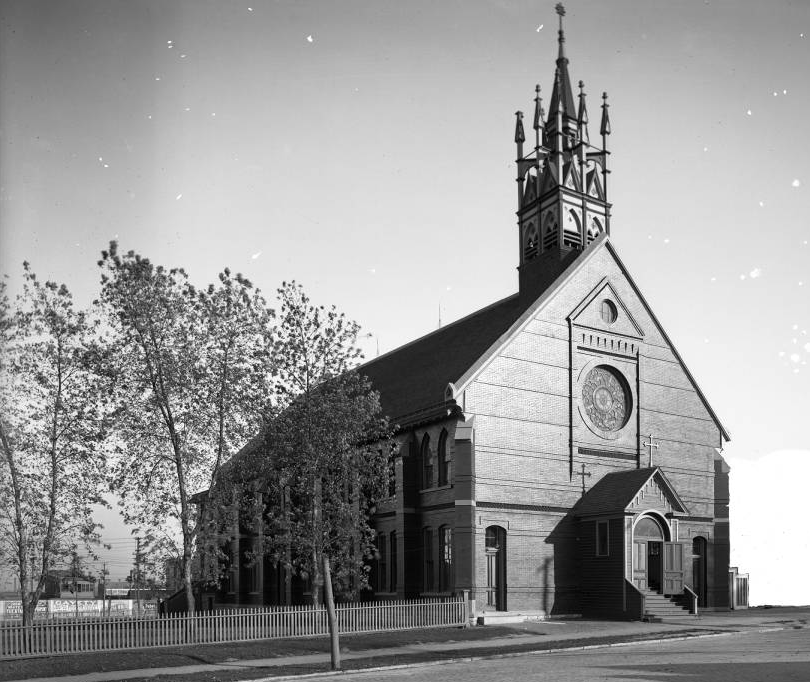
Starting in the 1860s, Irish immigrant workers from the Union Pacific shops moved into houses, tenements and apartments between North 10th Street and North 24th Street, from Dodge to Paul Streets. This neighborhood, now called North Downtown, was Omaha’s Irish neighborhood for more than 50 years, into the 1920s. The Irish in Omaha were mostly devout Catholics, and as early as 1868 the local bishop knew the city’s third parish would need to be in their neighborhood. These families moved into cottages, shacks and tenements between North 13th and North 17th, from Izard Street north to Lake Street. The archdiocese bought land at North 17th and Izard Streets in 1868, and the parish was formed in 1876. In the first decades of the parish, a Strawberry Festival was held annually.
When it was established, the parish served 70 families. Spanning from the Missouri River to the church, and from Lake Street south to St. Philomena, the parish was largely residential in its early decades. Originally opened to serve the Irish railroad workers and their families who lived in the area, it doubled in size by 1880. Rev. Roman A. Shaffel (1838-1908) was the first priest at the church, and was also the first leader of Creighton University when it opened in 1878. Because of that, there were several parish events at the college in the first decade of the church.
For its first 50 years, the Archdiocese selected priests for Holy Family reflecting its ethnic population. From 1876 to 1937, the parish was served by Irish priests. From 1937 to 1966, it was served by Italian priests.
Architectural Heritage

Today’s church is the third building used by the parish. After being started in a reused Catholic schoolhouse moved to North 18th and Izard, in 1880 the congregation moved to North 17th and Izard where they used a partially built basement that was never finished. In 1882, brothers Charles Cleves (1879-1953) and August Cleves were hired by the Archdiocese to design a church to be located at 18th and Izard Streets in the Near North Side neighborhood.
The Cleves brothers designed the church in the Gothic Revival and Romanesque Revival styles. Using exaggerated features on the bell tower’s spire, there were a large cross crowning the rectangular building, along with tall braces surrounding the bell tower. The building was built with a school on the first floor and church on the second, as well as a priests’ residence on the rear. There was originally a large porch on the front of the church too.
The construction was finished in six months. Costing $17,000, the building’s subcontractors included brickwork by Joseph Diess; stonework by Benjamin Melquist, and; painting and plastering by Henry Lehmann. Over time, the parish complex was expanded to include a rectory to the immediate south. At that point, the complex included the parish church, school and rectory.
Holy Family Church was finished in 1883 at 915 North 18th Street.
The Creighton Family
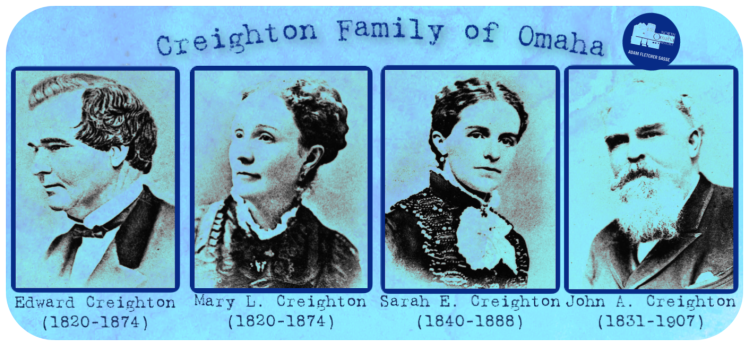
The Cleves were recommended to design the church by the Creighton family, who were prominent Catholic philanthropists in Omaha and major patrons to the parish. Originally from After the church, one of the brothers designed at least two commercial buildings for John A. Creighton (1837-1907), as well as the Poor Clares monastery, which John funded. He and his wife Sarah (1840–1888) donated the altars, confessional and bell to the church. The pews were donated by Joseph Creighton (1825-1903). Operating from the 1880s through 1909, the architect brothers designed several other churches and commercial buildings around Omaha as well.
Germans and Hungarians
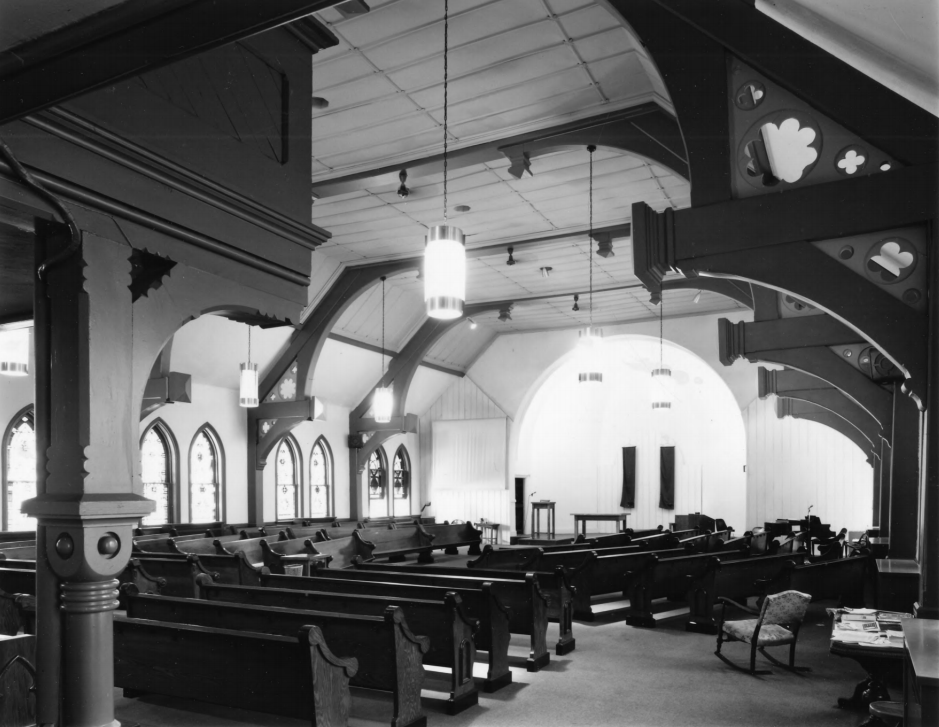
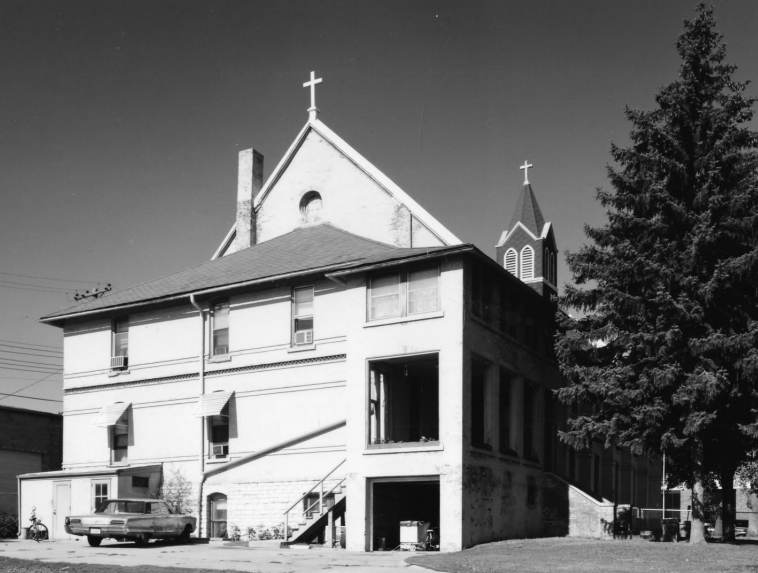

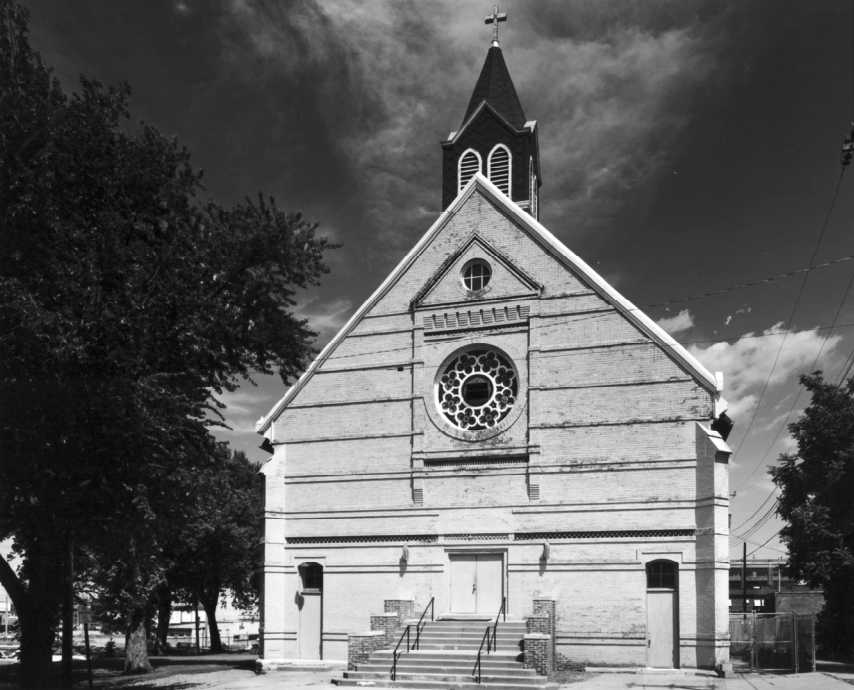
In 1890, the parish included 450 families. When Bishop James O’Connor died in May of that year, his funeral procession started at Holy Family. Bishop O’Connor was an Irish priest, and served as the first bishop of the Diocese of Omaha from 1876 until he died. There were more than 1,500 participants in the funeral procession, along with many thousands who attended the funeral and watched the procession.
During the next decade, the Archdiocese created two new parishes to the west and north of Holy Family: Sacred Heart on Binney Street, and Saint John’s on the Creighton campus.
The Irish parishioners originally at Holy Family were largely assimilated into Omaha’s white population by the 1890s. They moved out of the Near North Side and eventually joined new parishes throughout North Omaha, including Holy Angels, Saint Bernard, Blessed Sacrament and Saint Therese.
In the 1890s, many Germans, Hungarians and other eastern Europeans were working in the UP shops and yards and moving into the Near North Side. They became the next wave of immigrants to attend Holy Family. During the 1880s and 1890s, the Feast of St. Joseph was celebrated at Holy Family, until it moved to the new St. John’s Church which opened at Creighton. In this same era, the Archdiocese kept growing and several more parishes were opened. A priest from Holy Family was assigned to serve the Omaha’s Czech immigrant community in 1915.
Italians in North Omaha
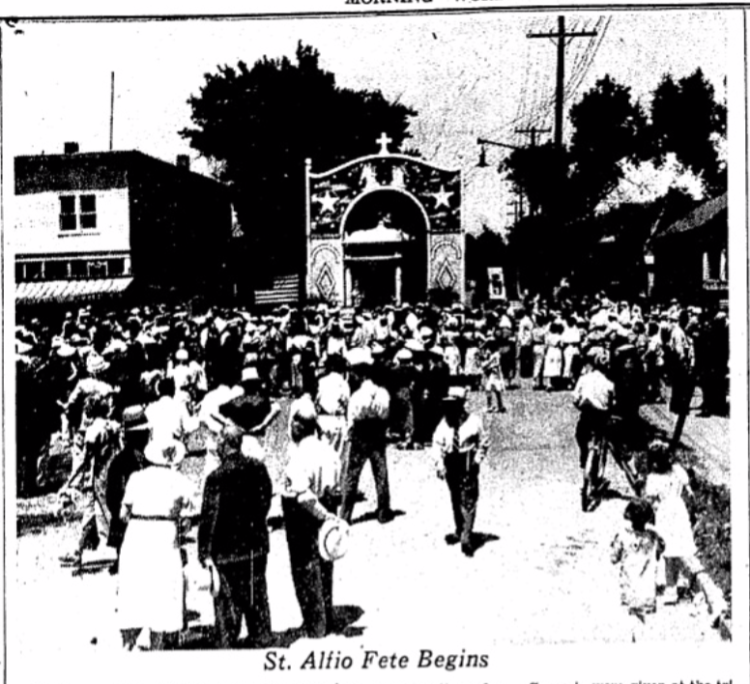
In the late 1920s, the Near North Side neighborhood became home to a large Italian immigrant community. Working at the UP shops and rail yards, the immigrants wanted to live by their work like the previous wave of Irish immigrants had. Traditionally Catholic, the Italians gravitated to Holy Family Church, and in response the parish was designated an Italian parish to serve this population. Italian priests, nuns and culture filled the institution, and Holy Family quickly became the center of North Omaha’s Italian community.
For the next 30 years into the early 1950s, Holy Family had vibrant religious, social and cultural community activities. Masses were popular within the surrounding neighbors. Festivals and parades, ceremonies and feasts were celebrated for the patron saint in the parish, Saint Alfio. A statue of Saint Alfio was paraded through the neighborhood during an annual celebration, and prayers were made accordingly.
During this era, Holy Family’s parish school grew abundantly. In the late 1940s and early 1950s, there were so many students that the school had three grades to a classroom.
White Flight

By the early 1950s, the commercial and industrial growth along Cuming Street had spread toward Holy Family. Suddenly, homes and apartments throughout the neighborhood were being demolished and replaced with businesses, factories, warehouses and stores. While that was happening, Omaha’s Italian immigrants were becoming integrated within the city’s white population. White flight led to them to move away from the Near North Side to west Omaha. When they moved, these families left their historical parish and joined new congregations emerging past 72nd Street.
Holy Family School closed in 1961. Starting in the mid-1950s, families withdrew their children quickly to attend new parochial and public schools in their new neighborhoods, and the parish simply could not sustain the school, which just years early had burst at the seems with students.
During this era, the parish was led by Father Francis A. Moreci. By the early 1960s, the congregation dropped to about 200 members.
A Center for Justice
“Justice has to start in its own backyard. Which means that it can’t happen when there are people who are filthy rich and people who are dyingly poor until the bridge is gapped.”
– Father John McClauslin
Under the pastorate of Father John McCauslin, Holy Family Church became regarded as a center of progressive activism in Omaha. To be sure, the church was committed to social justice before McCauslin, including Father James Stewart participating in the March on Selma in 1965. The following year, Rev. Stewart secured the first VISTA positions in Omaha, serving the Near North Side neighborhood from the church.
When he came to the church in 1967, Holy Family quickly became a devoted urban ministry open to parishioners from across the city. With church services featuring guitars, mariachis, bongos and flute music along with social justice sermons, the priest was credited with being charismatic and outgoing.
In the early 1970s a young man from the local neighborhood was highly active at the church. His name was David Rice, and in addition to playing guitar in church services, he was active throughout the ministries of the parish, including serving homeless meals and other activities. Rice, who later changed his name to Mondo we Langa, was unjustly convicted of murdering an Omaha police officer in 1971 in a case largely shown to be a government setup afterwards. Fundraisers to for we Langa and Poindexter’s defense were held at the church in the years after their conviction, including a 1975 event with Angela Davis.
Today


After 40 years as a non-geographically defined parish, the church became smaller and smaller with an aging population. In January 2020, the diocese announced the end of the Holy Family church, merging it with a nearby parish.
They innovated and served the surrounding neighborhood in dynamic ways, with a Door Ministry, a Food Redistribution Program, and the publication of the Nebraska Criminal Justice Review and New Wine. The church was instrumental in the founding and sustaining of the Siena/Francis House. The Holy Family lunch program provided sack lunches to homeless and low income people Monday through Friday, with volunteers who make and pack the lunches and distribute the food.
There were plans for a new community garden on church grounds to respond to the increasing number of low-income housing units being built in the surrounding neighborhood. The Saint Francis House is constructing a new housing structure behind the church, and the Society of St. Vincent de Paul Omaha has taken over the former Holy Family parish house for use as its offices.
The Holy Family church was credited with retaining a lot of its historical architecture through the decades. Despite undergoing interior and exterior renovations, the church maintains many features and elements. After being built as one of several, the building was credited with being the oldest remaining church to combine a church and a school and the priests’ residence in Omaha.
Holy Family was the oldest Catholic parish in Omaha. As the building still stands, it is the second oldest brick building in Omaha, and the oldest brick church in continual use in Nebraska. It was listed on the National Register of Historic Places in 1986, and was named an official Omaha Landmark by the city’s Landmark Heritage Preservation Commission in 1985. There’s no word on the its future, aside from continuing to be used for church ministries.
Holy Family Parish Timeline
- 1868: Bishop James O’Gorman directed the Archdiocese to buy land at North 17th and Cuming Streets for a future parish church.
- 1876: Holy Family parish organized by Bishop Michael O’Connor.
- 1876: The first church building was dedicated at North 17th and Cuming. It was originally St. Philomena’s Cathedral schoolhouse at 8th and Howard, and moved to the site.
- 1880: Services were moved to a newly built basement space at 18th and Izard, but its poor construction led to that building never being finished.
- 1881: The first building used for the church was converted into Holy Family’s schoolhouse. The Sisters of Mercy run the school and more than 150 students were enrolled.
- 1882: The Cleves brothers were hired as architects to design today’s Holy Family church.
- 1883: Father Roman Shaffel is appointed to direct the construction of the new church.
- 1883: Construction happened from April to October and is completed in six months.
- 1890: The parish grew to 450 families.
- 1926
- 1961: The parish school closed.
- 2020: The diocese announces the merger of the parish and the permanent closure of the church building.
Priests at Holy Family
- Rev. Roman A. Shaffel
- Rev. John F. Quinn
- Rev. Koopman
- Rev. Hilman
- 1898: Rev. Fitzpatrick
- to 1908: Rev. J. F. O’Neill
- 1915 to 1917: Rev. Patrick J. Moran
- to 1937: Rev. Patrick Cooney
- : Rev. S. L. Dowd
- 1937 to 1954: Rev. J. J. Faso (1901-1954), an Italian-born priest
- Rev. James Stewart
- 1967 to 1979: Rev. John (Jack) McClauslin
You Might Like…
MY ARTICLES ABOUT THE HISTORY OF CATHOLICS IN NORTH OMAHA
Parishes: St. Benedict | Sacred Heart | St. John | Holy Family | Holy Angels
People: Cathy Hughes | David Rice
Other: St. Vincent’s Home for the Aged | St. Clare’s Monastery | Creighton University | Creighton Working Girls Home
MY ARTICLES ABOUT THE HISTORY OF OMAHA’S NEAR NORTH SIDE
GROUPS: Black People | Jews and African Americans | Jews | Hungarians | Scandinavians | Chinese | Italians
EVENTS: Redlining | North Omaha Riots | Stone Soul Picnic | Native Omaha Days Festival
BUSINESSES: Club Harlem | Dreamland Ballroom | Omaha Star Office | 2621 North 16th Street | Calhoun Hotel | Warden Hotel | Willis Hotel | Broadview Hotel | Carter’s Cafe | Live Wire Cafe | Fair Deal Cafe | Metoyer’s BBQ | Skeet’s | Storz Brewery | 24th Street Dairy Queen | 1324 N. 24th St. | Ritz Theater | Alhambra Theater | 2410 Lake Street | Carver Savings and Loan Association | Blue Lion Center | 9 Center Variety Store | Bali-Hi Lounge
CHURCHES: St. John’s AME Church | Zion Baptist Church | Mt. Moriah Baptist Church | St. Philip Episcopal Church | St. Benedict Catholic Parish | Holy Family Catholic Church | Bethel AME Church | Cleaves Temple CME Church | North 24th Street Worship Center
HOMES: A History of | Logan Fontenelle Housing Projects | The Sherman | The Climmie | Ernie Chambers Court aka Strelow Apartments | Hillcrest Mansion | Governor Saunders Mansion | Memmen Apartments
SCHOOLS: Kellom | Lake | Long | Cass Street | Izard Street | Dodge Street
ORGANIZATIONS: Red Dot Athletic Club | Omaha Colored Baseball League | Omaha Rockets | YMCA | Midwest Athletic Club | Charles Street Bicycle Park | DePorres Club | NWCA | Elks Hall and Iroquois Lodge 92 | American Legion Post #30 | Bryant Resource Center | People’s Hospital | Bryant Center
NEIGHBORHOODS: Long School | Logan Fontenelle Projects | Kellom Heights | Conestoga | 24th and Lake | 20th and Lake | Charles Street Projects
INDIVIDUALS: Edwin Overall | Rev. Russel Taylor | Rev. Anna R. Woodbey | Rev. Dr. John Albert Williams | Rev. John Adams, Sr. | Dr. William W. Peebles | Dr. Craig Morris | Dr. John A. Singleton, DDS | Dr. Aaron M. McMillan | Mildred Brown | Dr. Marguerita Washington | Eugene Skinner | Dr. Matthew O. Ricketts | Helen Mahammitt | Cathy Hughes | Florentine Pinkston | Amos P. Scruggs | Nathaniel Hunter | Bertha Calloway
OTHER: 26th and Lake Streetcar Shop | Webster Telephone Exchange Building | Kellom Pool | Circus Grounds | Ak-Sar-Ben Den
MY ARTICLES ABOUT HISTORIC CHURCHES IN NORTH OMAHA
GENERAL: Directory | Black Churches | Florence Churches
METHODIST: 17th Street | Pearl Memorial UMC | St. John’s AME | Bethel AME | Cleaves Temple | Ames Avenue | Trinity | Walnut Hill | 18th Street |
BAPTIST: Mount Moriah | Zion | Immanuel |
CATHOLIC: Holy Family | St. Benedict the Moor | St. John’s | Holy Angels | Sacred Heart | St. Cecilia | St. Therese
PRESBYTERIAN: Calvin Memorial | Hillside | First United | Covenant | St. Paul
EPISCOPALIAN: St. Phillips |
COGIC: New Bethel | Faith
LUTHERAN: Hope | St. Paul | Mount Olive
OTHERS: Mt. Calvary |
RELATED: St. Clare’s Monastery | Omaha Presbyterian Theological Seminary | North Omaha Catholic Schools | Black Churches | Florence Churches | Kountze Place Churches
MY ARTICLES ABOUT THE HISTORY OF SCHOOLS IN NORTH OMAHA
GENERAL: Segregated Schools | Higher Education
PUBLIC GRADE SCHOOLS: Beechwood | Belvedere | Cass | Central Park | Dodge Street | Druid Hill | Florence | Fort Omaha School | Howard Kennedy | Kellom | Lake | Long | Miller Park | Minne Lusa | Monmouth Park | North Omaha (Izard) | Omaha View | Pershing | Ponca | Saratoga | Sherman | Walnut Hill | Webster
PUBLIC MIDDLE SCHOOLS: McMillan | Technical
PUBLIC HIGH SCHOOLS: North | Technical | Florence
CATHOLIC SCHOOLS: Creighton | Dominican | Holy Angels | Holy Family | Sacred Heart | St. Benedict | St. John | St. Therese
LUTHERAN SCHOOLS: Hope | St. Paul
HIGHER EDUCATION: Omaha University | Creighton University | Presbyterian Theological Seminary | Joslyn Hall | Jacobs Hall | Fort Omaha
MORE: Fort Street Special School for Incorrigible Boys | Nebraska School for the Deaf and Dumb
Listen to the North Omaha History Podcast on “The History of Schools in North Omaha” »
Elsewhere Online
- Holy Family Parish official website
- Holy Family Church on the City of Omaha Landmarks Heritage Preservation Commission
- Holy Family Church on Wikipedia
- “Behind peace witness, a prophetic, transforming priest” by Joshua J. McElwee in the National Catholic Reporter on Mar 25, 2011
BONUS PICS!

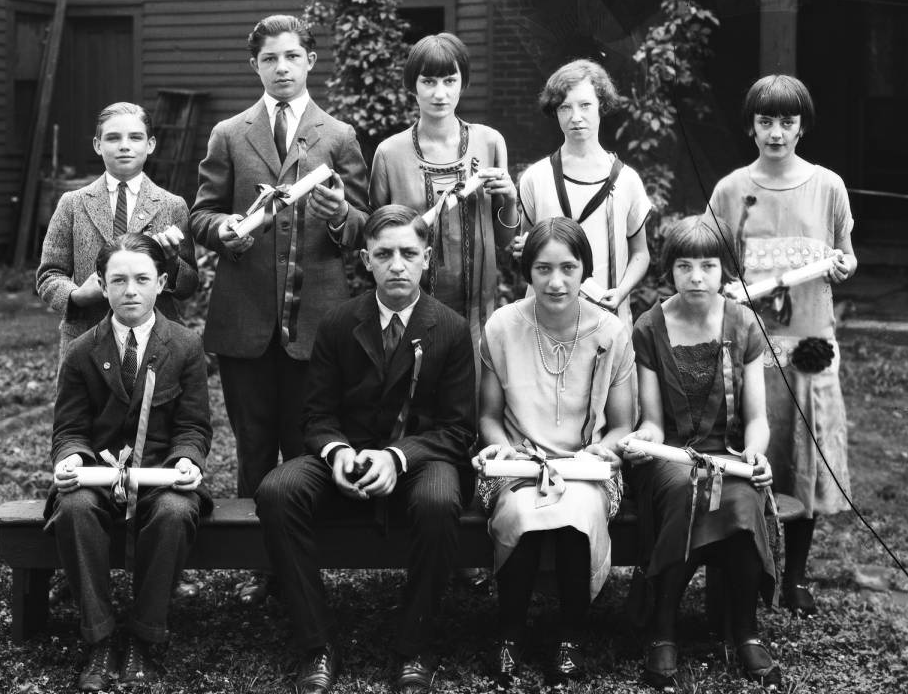
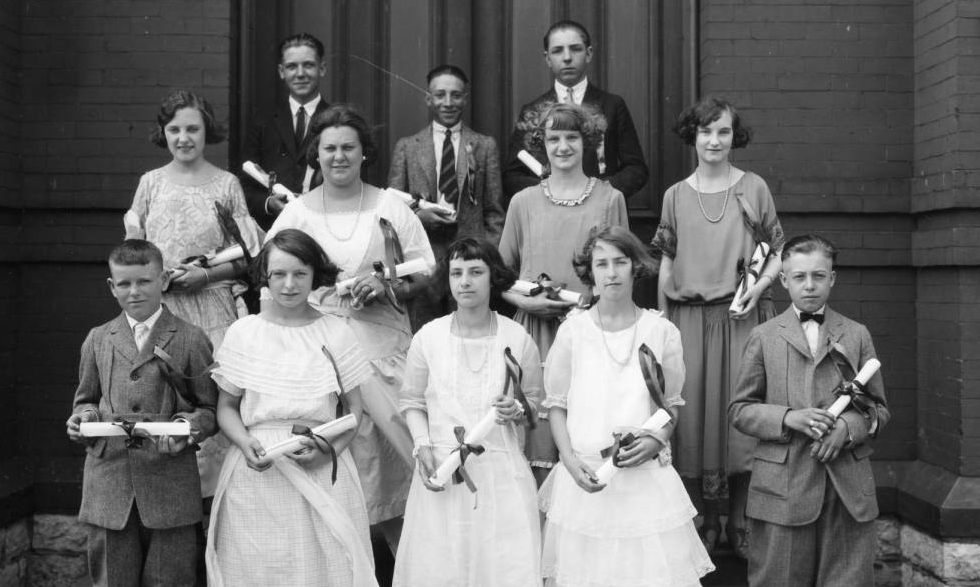





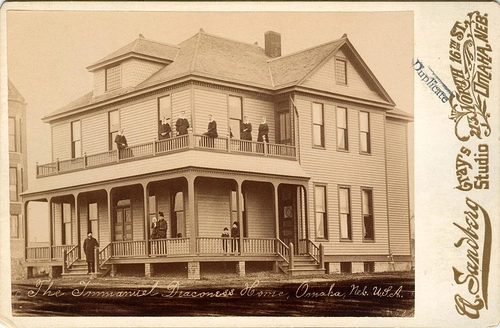

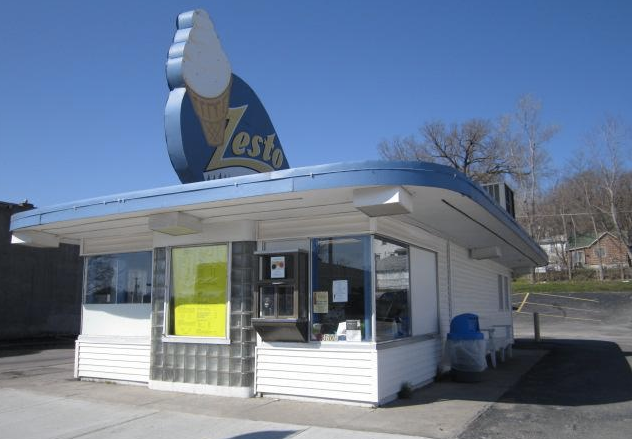
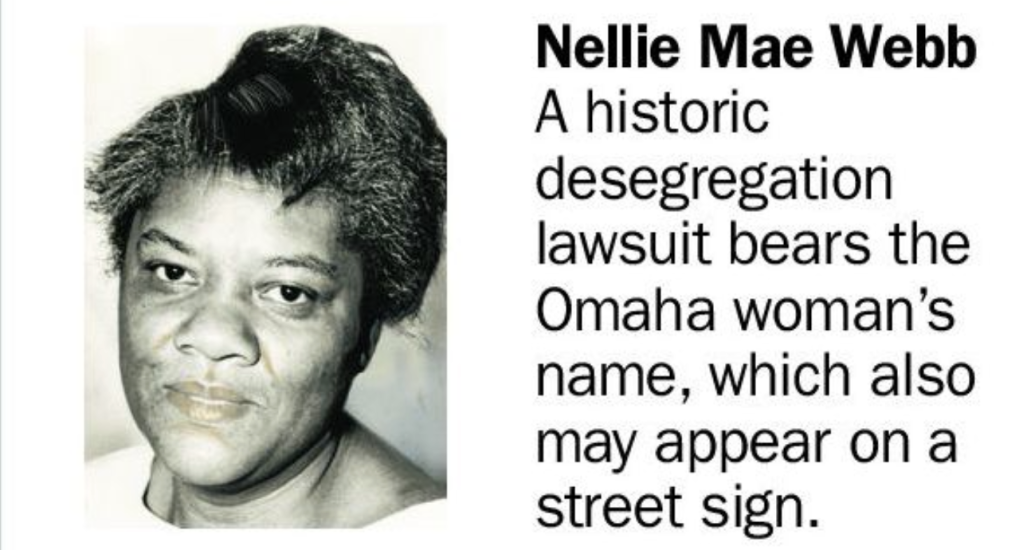
Leave a comment